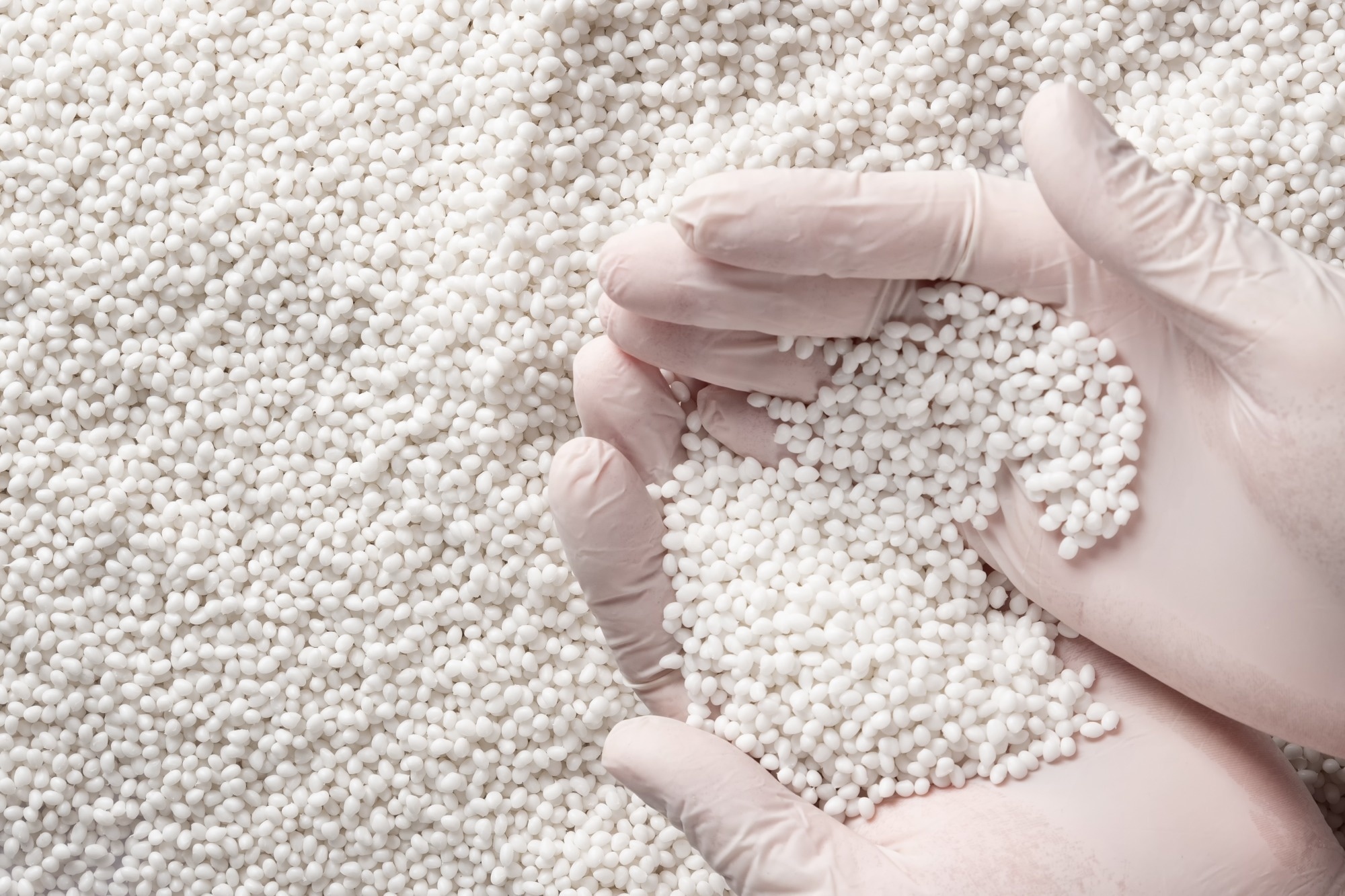Researchers have developed a lightweight concrete that combines nano-silica and expanded polystyrene to significantly enhance both thermal insulation and structural strength.
 Study: Developing lightweight structural concrete with enhanced thermal and durability properties through nano-silica and expanded polystyrene integration. Image Credit: SergeyKlopotov/Shutterstock.com
Study: Developing lightweight structural concrete with enhanced thermal and durability properties through nano-silica and expanded polystyrene integration. Image Credit: SergeyKlopotov/Shutterstock.com
This advancement, detailed in a recent Scientific Reports article, explores how integrating nano-silica (NS) and expanded polystyrene (EPS) granules into concrete can result in a high-performance composite with improved durability, energy efficiency, and reduced water permeability.
Background
Improving the thermal performance of concrete without sacrificing structural integrity has become increasingly important in sustainable construction. Among the many strategies explored, nanomaterials and EPS stand out for their complementary properties. Nanoparticles like NS can refine the microstructure and influence the thermal and mechanical behavior of cement-based materials, while EPS is known for its low density and excellent insulation characteristics.
Specifically, nano-silica (SiO2) acts as a pozzolanic material that enhances compressive strength, lowers water permeability, and contributes to a denser internal structure. When combined with EPS, these materials are expected to work synergistically, balancing structural performance and thermal efficiency.
The study aimed to evaluate how these materials, used individually and together, affect concrete's physical properties - ultimately offering a more sustainable and high-performing alternative for modern building applications.
Methods
To test this, researchers prepared 20 concrete mixes using a fixed cement-to-sand ratio of 1:2 and a water-to-cement ratio of 0.50. Nano-silica was added at 0.75 %, 1 %, and 1.25 % by weight of cement. EPS replaced fine aggregates at levels of 25 %, 50 %, 75 %, and 100 %. A control mix with only cement and sand served as a baseline.
In addition to the combined NS-EPS mixes, separate sets with only NS or only EPS were made to isolate their effects on thermal performance. All concrete specimens were cast manually, demolded after 24 hours, and cured in a moist environment.
Thermal conductivity, volumetric heat capacity, and thermal diffusivity were measured using the transient plane source method. Compressive strength was tested with a universal testing machine. NS’s mineral composition was analyzed using X-ray diffraction, and its microstructure was observed under field emission scanning electron microscopy.
Results and Discussion
The inclusion of nano-silica significantly improved the concrete’s thermal and mechanical properties. Increasing the NS content from 0.75 % to 1.25 % reduced thermal conductivity by up to 15 %, primarily due to enhanced pozzolanic reactions, filler effects, and increased voids from particle agglomeration. At the same time, thermal diffusivity dropped by 14 %, and volumetric heat capacity rose by 9 % - indicating a denser and more stable internal structure.
EPS also played a crucial role in thermal insulation. When used at 100 % replacement, EPS reduced thermal conductivity by up to 80.5 %, thanks to its air-filled structure. However, high EPS levels also decreased the concrete's volumetric heat capacity, hinting at some trade-offs in structural integrity.
Mechanically, NS proved especially beneficial. At 1–1.25 % dosage, compressive strength increased by up to 36.5 %, and water permeability was reduced by 40–52 %. These improvements were attributed to NS’s role in filling micro-voids and enhancing hydration products in the cement matrix.
When used together, NS and EPS produced the most notable effects. Thermal conductivity dropped by 39–86 %, thermal effusivity by 28–71 %, and diffusivity by 28–79 %, depending on mix ratios. While EPS boosted insulation, NS reinforced the matrix, resulting in a unique microstructure that maintained strength while optimizing thermal performance.
Conclusion and Future Outlook
This study highlights how nano-silica and EPS can work together to produce lightweight concrete with strong mechanical performance and excellent thermal insulation. The resulting composite offers real promise for energy-efficient construction where both durability and insulation are key.
That said, scaling this innovation for widespread use brings a few challenges. Cost-effective sourcing or on-site synthesis of nano-silica needs further investigation, and incorporating recycled materials into EPS could help reduce both costs and environmental impact. Long-term durability is another critical area, especially how thermal and structural performance might change over time under real-world conditions.
With further research and development, this composite could become a practical solution for building materials that meet energy and sustainability targets, bridging the gap between performance and environmental responsibility.
Journal Reference
Ahmed, S. A., Ebrahem, E., El-Amir, A. A. M., & El-Feky, M. S. (2025). Developing lightweight structural concrete with enhanced thermal and durability properties through nano-silica and expanded polystyrene integration. Scientific Reports, 15(1), 27100. DOI: 10.1038/s41598-025-11354-7. https://www.nature.com/articles/s41598-025-11354-7
Disclaimer: The views expressed here are those of the author expressed in their private capacity and do not necessarily represent the views of AZoM.com Limited T/A AZoNetwork the owner and operator of this website. This disclaimer forms part of the Terms and conditions of use of this website.